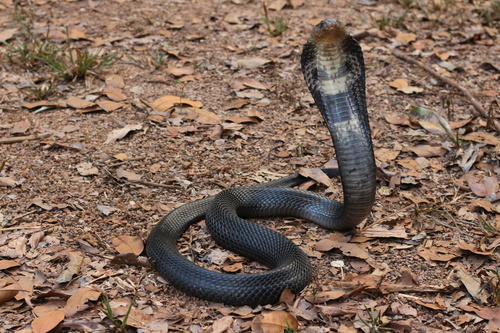
Monocled Cobra
The Monocled Cobra captivates with its striking hood pattern. Masters of stealth in Asian landscapes, these venomous serpents are vital for pest control, balancing ecosystems by preying on rodents. Their dramatic hood display, a defensive spectacle, ensures they're both feared and revered across their native ranges.
High
Aggression
Least Concern
Conservation Status
Decreasing
Population Trend
Characteristics
The Monocled Cobra (Naja kaouthia) is known for its distinctive circular hood pattern resembling a monocle. It inhabits forests, grasslands, and agricultural fields across South and Southeast Asia. This cobra is highly venomous, displaying defensive hooding behavior. It plays a crucial role in controlling rodent populations.
Distribution Range of the Monocled Cobra
Naja kaouthia, commonly known as the monocled cobra, is native to South and Southeast Asia. It is found in countries such as India, Bangladesh, Bhutan, Nepal, Myanmar, Laos, Thailand, Cambodia, Vietnam, and parts of southern China.
Monocled Cobra's Habitat
Environmental Conditions
The monocled cobra inhabits a variety of environments ranging from grasslands, forests, and agricultural lands to urban areas. It prefers lowland regions but can also be found in hilly terrains. The species is adaptable to different types of vegetation and is often found near water bodies.
Ecological Niche
As a highly adaptable predator, the monocled cobra primarily preys on small mammals, birds, amphibians, and other reptiles. It is known to play a role in controlling the population of rodents and other small animals, making it an important species in maintaining the ecological balance in its native habitats.
Copyright @ Nature Style Limited. All Rights Reserved.
 English
English